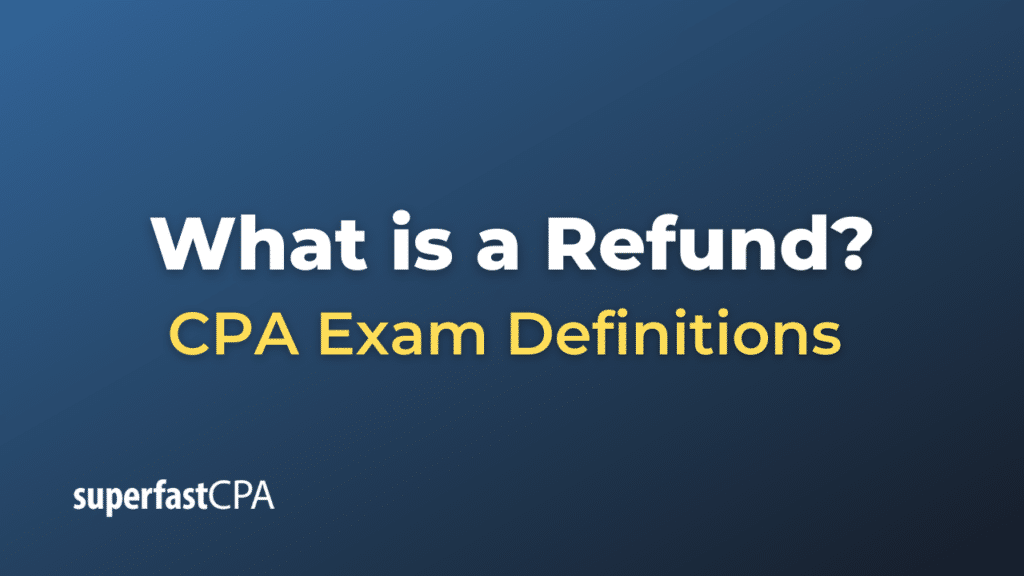Refund
A refund is a reimbursement or repayment of money to a purchaser or customer. Refunds are typically given when a customer is dissatisfied with a product or service, or when there’s been an overpayment or other errors in the billing process. They represent a return of funds that were previously paid.
Here are some common scenarios where refunds might be issued:
- Returned Merchandise: When a customer returns a product they purchased, whether due to defects, dissatisfaction, or any other reason, and the store’s return policy allows it, they may receive a refund for the amount they paid.
- Cancelled Services: If a customer pays for a service that is then cancelled or not delivered as promised, they may be eligible for a refund.
- Billing Errors: If a company mistakenly overcharges a customer or bills them twice for the same item, they would typically issue a refund for the overcharged amount.
- Event Cancellations: If an event (like a concert or conference) is cancelled and attendees have already purchased tickets, they may be given a refund.
- Digital Products: Some platforms offer refunds for digital products or subscriptions within a specific timeframe if the customer is not satisfied.
- Overpayment: If a customer accidentally pays more than the required amount, the excess might be refunded.
- Rental Deposits: In scenarios like renting property or equipment, once the rental term is over and if the terms for return are met (e.g., no damage to the rented item), the deposit may be refunded.
- Tax Refunds: If an individual overpays their taxes or is entitled to certain tax credits, they may receive a tax refund from the government.
The process and conditions under which a refund is issued can vary widely based on company policies, local regulations, and the nature of the transaction. For instance, some stores might offer refunds only within a specific period after the purchase, while others might offer store credit instead of a cash refund. It’s always advisable for consumers to be aware of the refund policies of businesses they deal with.
Example of a Refund
Let’s delve into a simple real-world example involving an online clothing store.
Jane orders a dress from “ChicStyles,” an online clothing store. She pays $100 for the dress and an additional $10 for shipping, making a total payment of $110.
When the dress arrives, Jane finds that it doesn’t fit her as she expected. The color also looks different in person than it appeared on her computer screen. Jane decides she wants to return the dress.
Upon checking the website, Jane learns about ChicStyles’ return and refund policy:
- Returns are accepted within 30 days of the purchase date.
- The item must be returned in its original condition with tags attached.
- Refunds will be processed to the original payment method.
- Shipping costs are non-refundable.
Jane meets all the criteria, so she ships the dress back to ChicStyles. Once the store receives the dress and verifies its condition, they initiate the refund process.
Given the store’s policy, Jane is refunded the $100 she paid for the dress. However, the initial $10 shipping charge is non-refundable, so she doesn’t get that amount back.
Jane’s bank account or credit card is credited with $100 from ChicStyles, representing the cost of the dress. Although she’s disappointed the dress didn’t work out, she’s satisfied with the store’s straightforward return and refund process.
This scenario demonstrates the importance for consumers to be aware of a company’s return and refund policy before making a purchase. It also underscores the reason businesses need clear and transparent policies to maintain trust and good relations with their customers.













